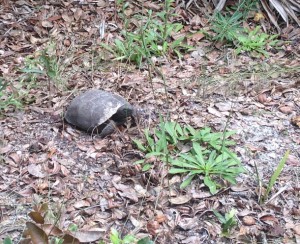
You may have heard the term “citizen science” before. I touched on this in my past blog “Phenology vs. Phrenology: Does the “r” Make a Difference?” But as a refresher, citizen science refers to collaboration between scientists and citizens (usually volunteers) to expand the opportunities for scientific data collection. Some people may wonder how they could possibly qualify to contribute to true science, while others see this as an exciting opportunity to help collect data for the scientific community. There are literally hundreds of citizen science programs available, so how do you know where to begin? A good place to start is scistarter.com. Here you can search by activity or topic to find a citizen science project that works best for you!
Today, I am going to focus on a new and somewhat different citizen science opportunity right in our area. The Florida Fish and Wildlife Conservation Commission (FWC) recently released a new smartphone application (app) for data collection on the state, threatened gopher tortoise. With one in every five people owning a smartphone, utilizing apps is a great way to connect directly with users.

FWC is currently working towards collecting as much data as possible on the gopher tortoise to better understand where they live. The gopher tortoise is considered a keystone species whose existence helps support the lives of other species. How does it do this? Well, you may be aware that gopher tortoises live in burrows; these burrows can be quite extensive, averaging depths of 6.6ft and lengths of 14.8ft. The fascinating thing about them is they aren’t only supporting their creator, but hundreds of others species too. Research has documented that over 350 species have been found to utilize a gopher tortoise burrow. One of their most critical uses is during a wild or prescribed fire. Wildlife find refuge in these burrows to escape from these historically natural and regularly occurring fires which help to maintain gopher tortoise habitat.
Now that you have a better understanding of the importance of the gopher tortoise, you might consider helping FWC document these creatures. By downloading the app called “Florida Gopher Tortoise” you can report sightings and burrows in your area and help contribute to science. We can all serve as an extra set of eyes for these wildlife biologists that are responsible for large regions of the state. Consider getting involved with a citizen science program today!
 0
0
